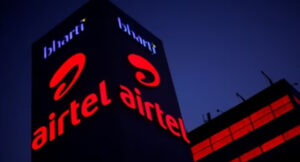T-Mobile added fewer wireless subscribers than Wall Street expected in the first quarter as rivals dialed up promotions in a saturating US telecom market, leading to a more than 5 per cent drop in the telecom company’s shares after hours.
The report, the last among major US telecom carriers this earnings season, underscored growing competition in a market where operators are leaning on price locks and bundled offers to woo customers as US tariffs cloud the economic outlook.
Bellevue, Washington-based T-Mobile added 495,000 monthly bill-paying customers in the first three months of 2025, more than AT&T’s additions, while Verizon lost subscribers in the period after warning of a hit from “off-season promotions.”
Still, the figure fell short of FactSet estimates of 506,400 additions.
To shield its market share, T-Mobile’s prepaid unit earlier this week unveiled four new plans that provide a five-year price guarantee and monthly charges as low as $25 per line. The company also has plans to launch its satellite-to-cell service, powered by SpaceX’s Starlink, in July.
The final pricing for the satellite service would be $10 a month — down from the $15 monthly price it had announced in February — and T-Mobile will maintain that price for at least a year, CEO Mike Sievert said on a call with analysts.
On the tariffs front, Sievert said that T-Mobile is currently not seeing any material impact to its business.
If the tariffs lead to price increases for mobile handsets, customers would have to bear it, which could lead to a slowdown in upgrade rates, he added.
In the first quarter, T-Mobile’s revenue fell 4.5 per cent to $20.89 billion, but came above expectations of $20.62 billion, according to data compiled by LSEG.
T-Mobile reaffirmed its annual wireless subscriber forecast, expecting it to be between 5.5 million and 6 million.
It also increased its 2025 adjusted earnings before interest, taxes, depreciation, and amortization (EBITDA) forecast to range between $33.2 billion and $33.7 billion, from its prior projection of $33.1 billion to $33.6 billion.
Analysts, on average, expect adjusted EBITDA of $33.4 billion, according to data compiled by LSEG. Reuters









